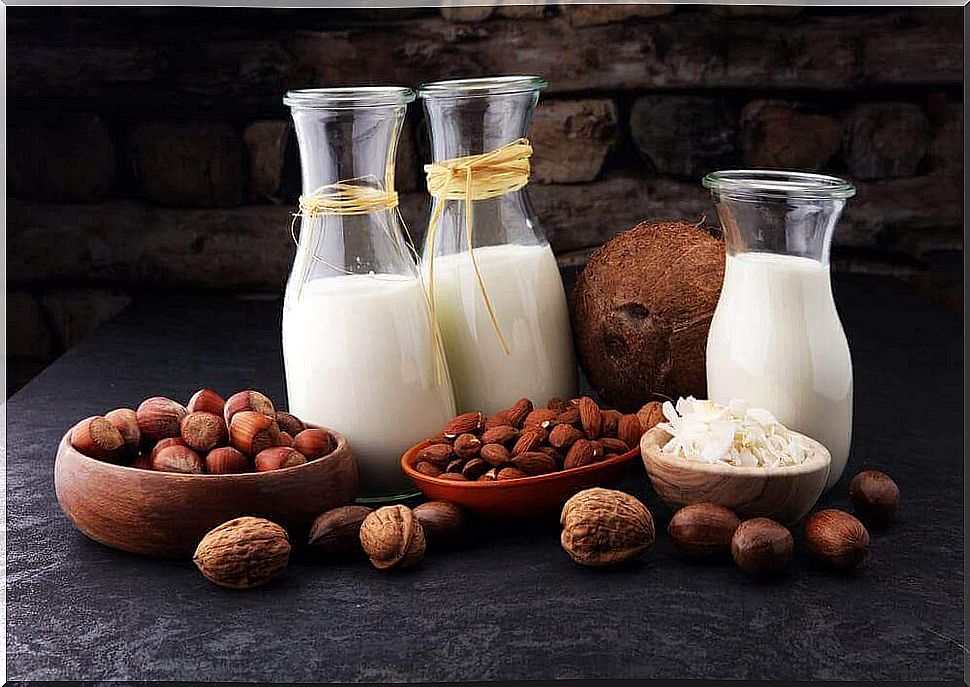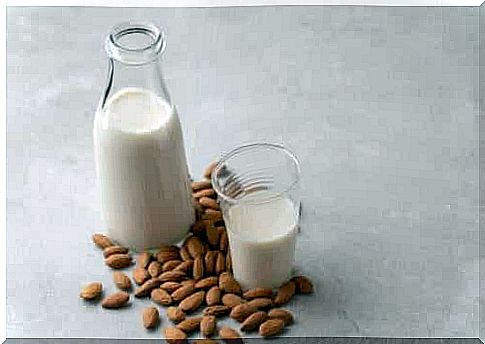Plant-based Drinks For Babies And Children

Today, you can find a wide variety of plant-based drinks on the market. These drinks are a great way to add variety to your diet or follow a vegan lifestyle. In addition, plant-based drinks are an excellent alternative for those who are allergic to milk protein.
Are plant-based drinks similar to cow’s milk?
From a nutritional point of view, we cannot consider plant-based drinks as a substitute for cow’s milk. Depending on the vegetable source, their composition is highly variable. At the same time, however, it is also important to mention that there is no need to replace milk, as it is not essential for our diet.
Milk is rich in calcium, protein and fat, although the latter two depend on the version of milk you drink. In this sense, the predominant macronutrient when it comes to plant-based drinks varies depending on their source.
Those that come from grains or pseudo-cereals, such as rice-based or oatmeal-based drinks, are rich in carbohydrates. Others, which are obtained from legumes, are rich in protein. Then there is a third group that comes from fatty fruits or dry nuts, such as coconut or almond-based drinks, which stand out for their high fat content.
So when we look at the nutritional composition, the vegan drink most similar to cow’s milk is soy milk fortified with calcium. This is due to the fact that the protein, fat and calcium content is close to that of milk.
Plant-based milk for newborns
During the first 6 months of a child’s life, breast milk and/or formula are the most important source of nutrition for newborns. Although the World Health Organization recommends that babies get their nutrition exclusively from their mother’s breast milk, this is not always the case.

Mastitis, an inflammation of the mammary glands, is very common and can cause some women to stop breastfeeding. This is just one example of reasons why a mother can bottle feed her little one. But what if she’s vegan? What formula should vegan mothers give their newborns to replace breast milk?
Another possibility, which is more common than you may think, is that a child has a cow’s milk protein allergy. Studies even suggest that between 2 and 3% of babies suffer from this allergy. So, what is the protocol for babies who are not breastfed and who cannot drink cow’s milk because of an allergy?
The vegan approach
A vegan diet in children is perfectly compatible with good growth according to the main scientific associations. However, parents should be knowledgeable about this subject and carefully apply the vegan approach. There are many reasons why parents can be for or against this type of lifestyle. In either case, however, it is important to respect their decision.
A vegan diet does not include foods that come from an animal source and therefore excludes all traditional milk. For those families who choose to supplement breast milk, there are soy and rice formulas suitable for vegan babies.
Soy milks should be free of isoflavones if they are intended for babies under 6 months of age. As for rice milk, these must be hydrolyzed to minimize its arsenic content.
After the age of 6 months, babies can consume soy milk with isoflavones. Later, after reaching the age of 2, parents can include other plant-based drinks in their little one’s diet.
However, it is important to reiterate that parents should carefully plan their child’s vegan diet. A dietitian or nutritionist with knowledge of the subject should supervise what babies eat and drink.
Cow’s milk protein allergy
When babies are allergic to the protein in cow’s milk, the only treatment is to completely avoid all products containing cow’s milk. In newborns, parents can approach the problem in two ways, depending on how they feed their babies.
In the case of breastfed babies, the one who should avoid dairy is the mother. Mothers will need to cut dairy products from their diet and keep their calcium and vitamin D levels in check. To figure out how much calcium and vitamin D they need, it helps to know how much of these micronutrients they’ve consumed before.
Once they know their individual calcium needs, they can increase their intake of calcium-rich foods. Of course, it’s important to remember that a woman’s calcium needs are higher while breastfeeding.
There are several options for bottle-fed babies. In these cases, hydrolyzed milk is the preferred treatment. And for those babies who can’t tolerate it, there’s soy and rice-based milks that meet the specifications we mentioned above.
Once children are two years old, parents can replace these formulas with fortified plant-based milks. In these cases, it is important to evaluate the protein content in a child’s diet to ensure their needs are being met.
How do you choose the right plant-based drinks?
To choose from so many options, parents should look at the nutrition label. While there isn’t much variation between different brands of cow’s milk, there is a lot of variety when it comes to plant-based drinks. Therefore, keep the following in mind when making your choice:
- The amount of raw material the milk contains, which appears in the form of a percentage.
- Check whether the drink is fortified with micronutrients or not. Calcium and vitamin D are two of the most common supplements, as they are naturally present in cow’s milk.
- The amount of added sugar, which should not exceed 4 to 5 grams per 100 grams of milk.
- Make sure that manufacturers have not taken measures to make the product cheaper, such as adding mixtures of raw materials. For example, some coconut-based drinks have a high rice content.
- To achieve the same fat content as milk, vegetable oils can be added. If they are added in a small amount, it is irrelevant and does not reduce the quality of the diet.








